These mushrooms from the morel family cause debate among mushroom pickers: there is still no consensus on the origin of the name and the exact number of species. Some scholars argue that the name comes from the Slavic word “wrinkle”.
There is logic in this version, and this can be seen by looking at the photo of morel mushrooms: their hat has specific folds that look like wrinkles. Another point of view is that the Russian name came from the German name for this mushroom - morchel.
Content
The characteristic features of morels
Inexperienced mushroom pickers, due to a lack of knowledge about how a morel mushroom should look, often confuse it with a line, as you can see from the photo, they are almost indistinguishable.
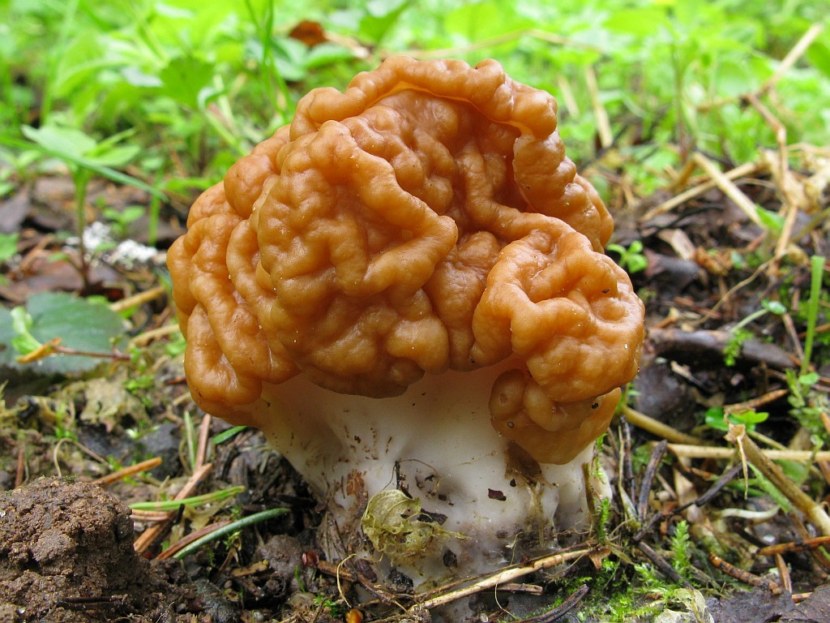
Such a mistake can lead to serious poisoning, because the lines can be poisonous.
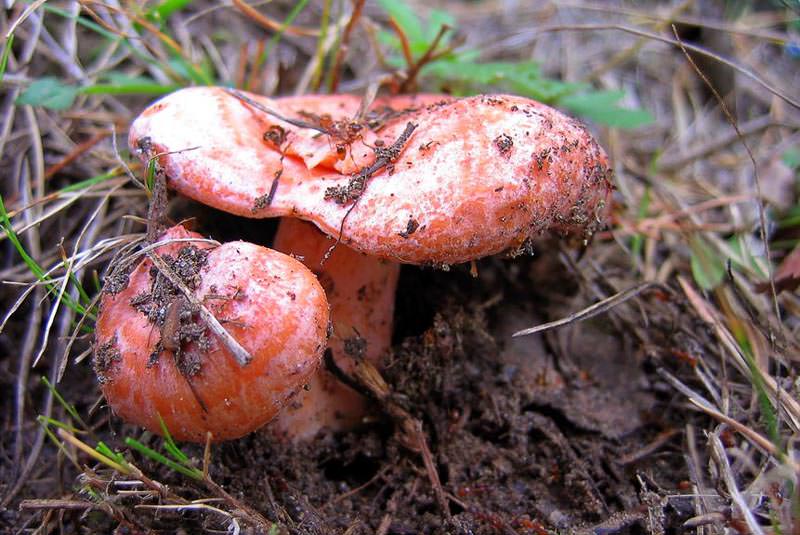 You may be interested in:
You may be interested in:Appearance and photo
The appearance of morels can vary depending on the species, in particular, the shape of the cap: from conical to spherical and its color indicates the mushroom belongs to a specific type, the color also varies from gray to brown.
With aging, the structure of the skin of the fetus practically does not change: most often it is porous, has longitudinal folds and looks like a honeycomb or a sponge. The leg of the mushroom is smooth, wide, the color can vary from white to brown.
Morphology
Morels usually grow up to 20 cm tall. The mushroom cap can reach 15 cm in height and 10 cm in diameter, which is much larger than the size of the legs, the height of which is not more than 10 cm and a diameter of not more than 5 cm.
In most, the cap grows together with the leg. Inside, the morel body is composed of colored hyphae, which are responsible for the absorption of water and nutrients. Between themselves, hyphae are separated by special partitions, due to which the circulation of water and useful trace elements occurs.
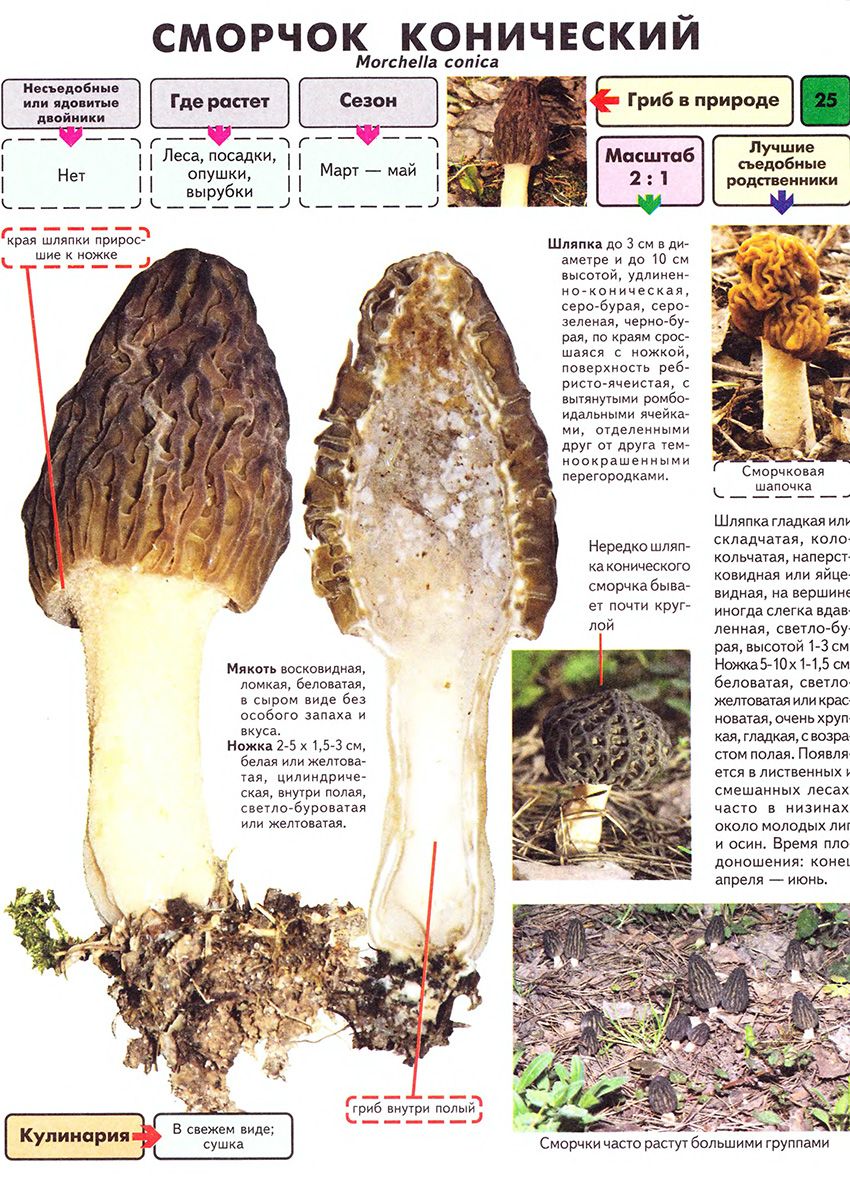
Fruit pulp has the following characteristics:
- White color;
- fragile structure;
- pleasant enough smell.
Habitat
Morels are often found in the temperate climate of the Northern Hemisphere (North America, Eurasia). Often they can be found in the mountains of Turkey, India, Mexico, least of all - in the southern hemisphere. The habitat of the mushrooms depends on the characteristics of a particular morel; in Russia you can find only 5 species that live in mixed deciduous forests, very rarely - in taiga regions.
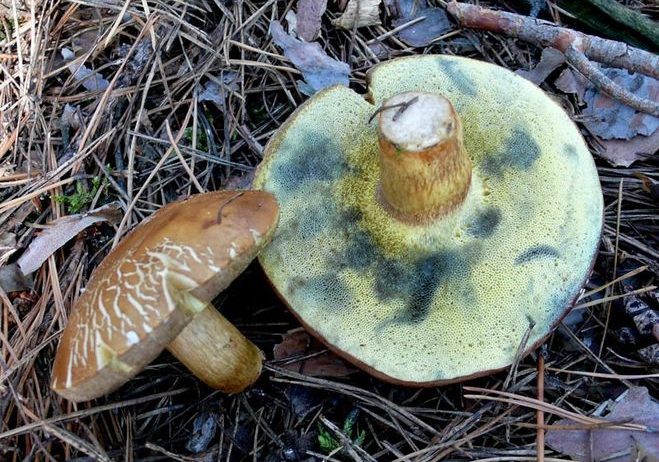 You may be interested in:
You may be interested in:Eating
Most people consider them poisonous, but this is not entirely true. All mushrooms are divided into edible and inedible, as well as a specific type of conditionally suitable for eating. Morels belong to the third type, because they contain a toxic substance - gelwellic acid. This substance has the property of destroying liver cells and red blood cells.
Time and collection rules
Morels are one of the very first mushrooms, they can be harvested in April and early May. The peak of growth occurs precisely in April, then the earth is already drying out too much, and the chances of a decent harvest are reduced. If the winter was not too cold and snowy, you can start the search from the end of March.
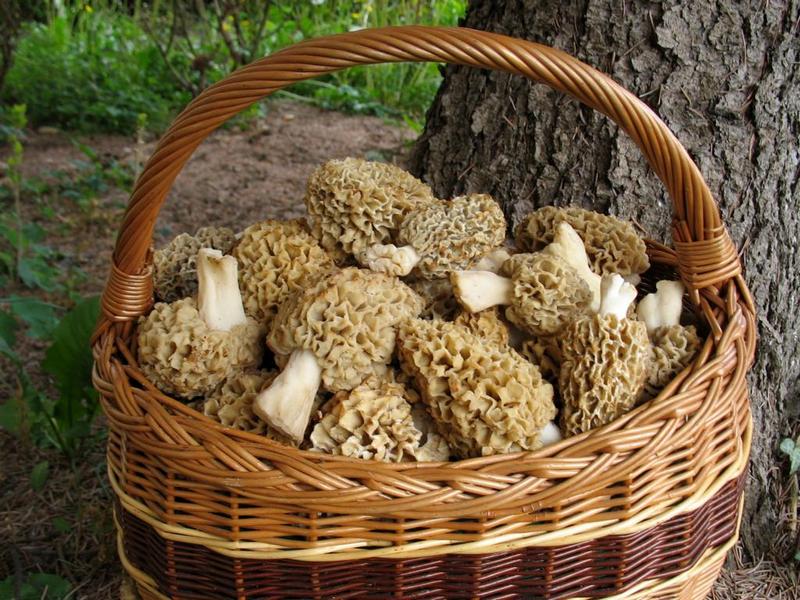
They grow rapidly and age as quickly, so you need to be able to choose the right time for collection. People even have the opinion that one needs to go for morels as soon as the first earrings begin to appear on aspens. There are a lot of these mushrooms in the autumn, but since at that time the forest is replete with an abundance of other species, the popularity of morels is very small.
Types and their description
Determining the exact number of species is difficult due to the complex nature of this fungus. Some scientists recognize only 3 species, while other experts believe that 150 species belong to this genus.
Ordinary
It is also called edible or real. It grows in the forests of the Northern Hemisphere. A distinctive feature is a brown egg-shaped hat with cells of various shapes and a wrinkled leg. In a fully ripened fetus, the leg acquires a gray color.
The hat is completely fused with the leg of the mushroom. This species is one of the most common, but finding it is quite difficult.
Tall
A rare and fairly large variety that grows almost throughout Russia. The main sign of a ripened specimen is a richly brown hat and a yellow leg. The shape of the cap is not very different from the previous grade, but in high morels the cells are more elongated and resemble a rhombus. Favorite habitats of such mushrooms are fertile patches of land, conflagration and places with a lot of moss and sand.
Very similar to a high morel, another variety is conical. However, due to too small differences, many mushroom pickers do not recognize it as a separate species and are called only a subtype of high.
Steppe
The variety is easy to recognize by its spherical light hat. Also, unlike other species, the steppe morel has a much denser structure (there are practically no voids in it) and it is one of the largest in Russia. The edges of the cap are fused with a small light leg.
Another characteristic difference of the steppe species is that such mushrooms grow in the open space and most of all they love water. The life of the fetus is not more than 4 days, while in especially dry periods mushrooms may not appear at all.
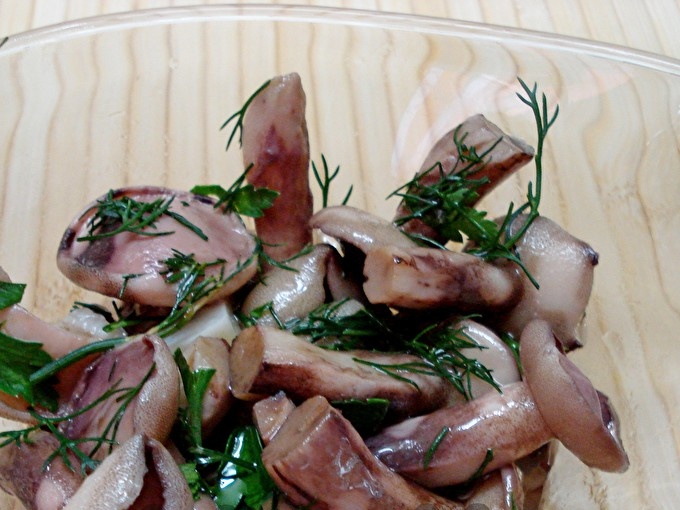 You may be interested in:
You may be interested in:Yellow or round
Not all scientists recognize this species as a separate variety and often equate it to ordinary morels. The name was given to this variety because of the specific spherical shape of the yellow cap.
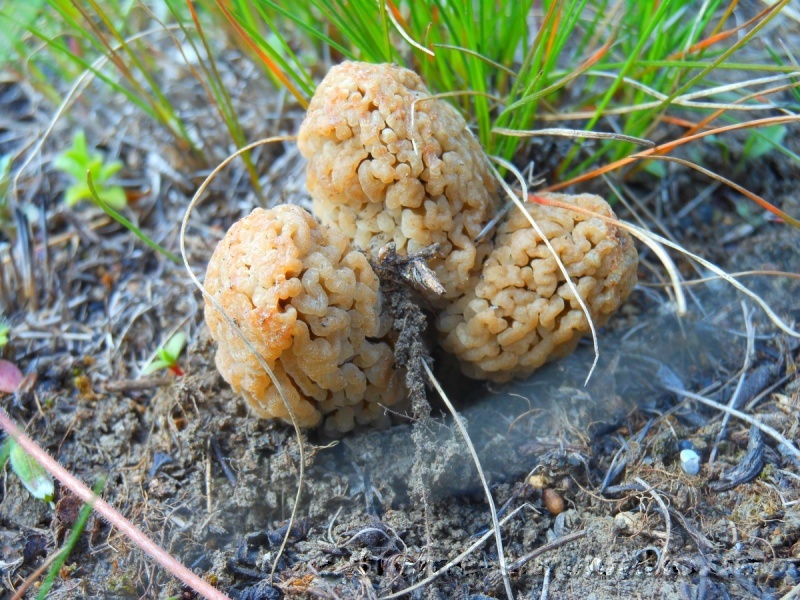
Due to the round shape, the cells on the hat also acquire an irregular wavy shape. This variety grows in temperate climatic zones of the Northern Hemisphere, rarely found in Crimea.
Useful properties and restrictions on the use of morels
The composition of the fruits is a large number of natural nutrients:
- protein (makes up almost 25% of the fruiting body);
- amino acids;
- B vitamins
The use of such mushrooms and products prepared from them, positively affects the digestive tract, relieves inflammatory processes in the body and contributes to the body's resistance to various diseases.In folk Russian medicine, decoctions of conical morel were used to improve vision.
Morels and products prepared on their basis should not be consumed:
- children under 12 years old;
- pregnant
- nursing mothers.
Recipes and cooking features
Morels are low-calorie mushrooms and many dishes are prepared from them:
- soups;
- sauces;
- paste;
- all kinds of casseroles;
- pilaf;
- You can prepare the filling for other dishes or dry as a seasoning.
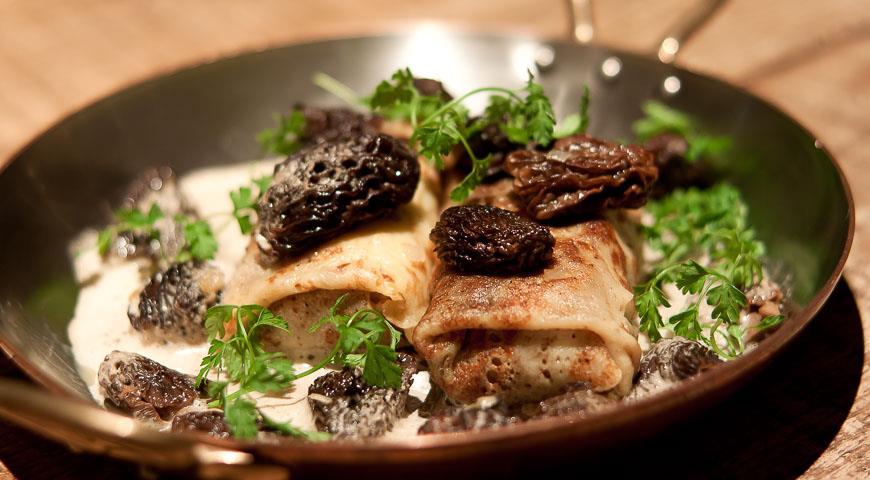
Before preparing morels, it is necessary to thoroughly wash, clean: sort through the fruits and try to remove sand, earth, snails as much as possible. Fold the washed morels in a large container, pour cold water and leave for at least 2 hours.
From time to time they need to be mixed so that the dirt remains. After this procedure, you need to thoroughly rinse them several times, additionally sorting out. When the cleaning process is completed, the mushrooms need to be boiled twice in 10-20 minutes in clean water. The broth merges because it is not suitable for consumption.
Fried morels
Will be needed for cooking:
- Mushrooms: 1 kg
- Onions: 0.5 kg
- Sunflower oil
- Butter.
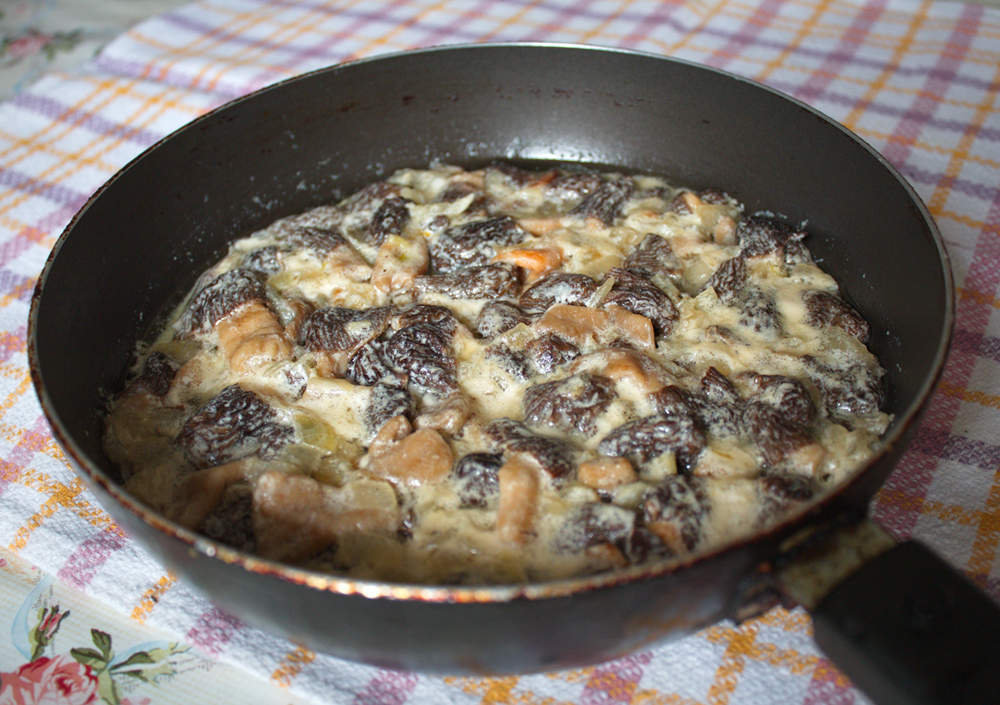
In a pan with a heated mixture of vegetable and butter, fry the onion sliced in half rings. Add boiled mushrooms, sliced and fry all together for about 7 minutes. Fried mushrooms can be added to any side dish - pasta, potatoes.
Uzbek pilaf with morels
For pilaf, you need:
- Mushrooms - 400 g
- Carrots - 100 g
- Butter - 75 g (or mutton fat - 60 g)
- Rice - 200 g
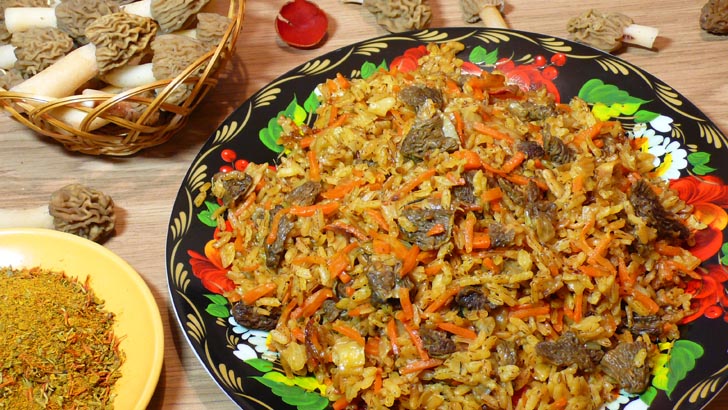
Mushrooms put in cold water, let it boil, boil for 3-4 minutes. Throw it in a colander. Cut the mushrooms and fry in oil until their volume is halved. Add the chopped carrots, pour water. After boiling, salt and add spices. Bring the carrots to half ready and add the washed rice, water. Cook until tender, after turning off the heat, let stand for another 20 minutes.
Answers to widespread questions
Morels belong to category 3 mushrooms, but in many countries they are considered delicacies and even grown by gardeners in private areas. In Russia, you can find only a few species, but in fact there are many more. Morel has not only taste value, but also since ancient times used in medicine to create tinctures, drops, tablets.

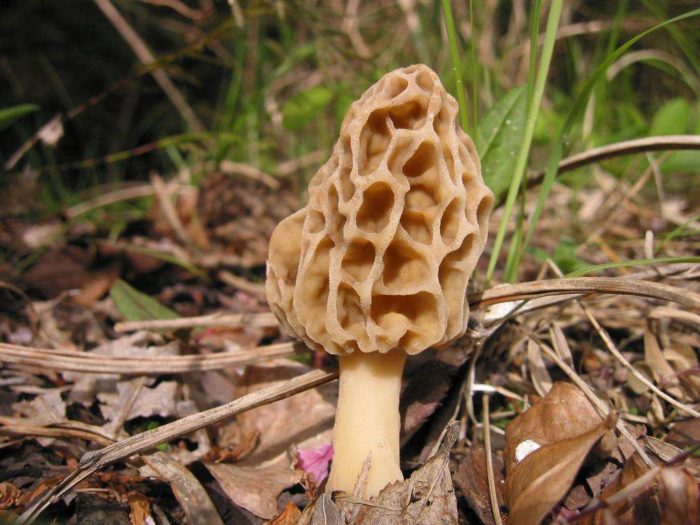
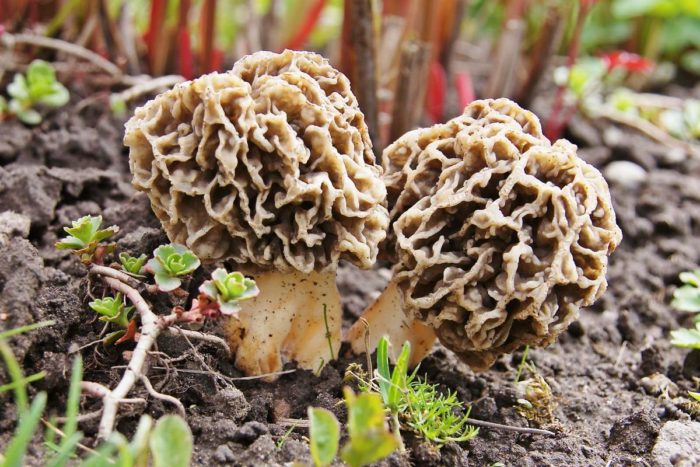
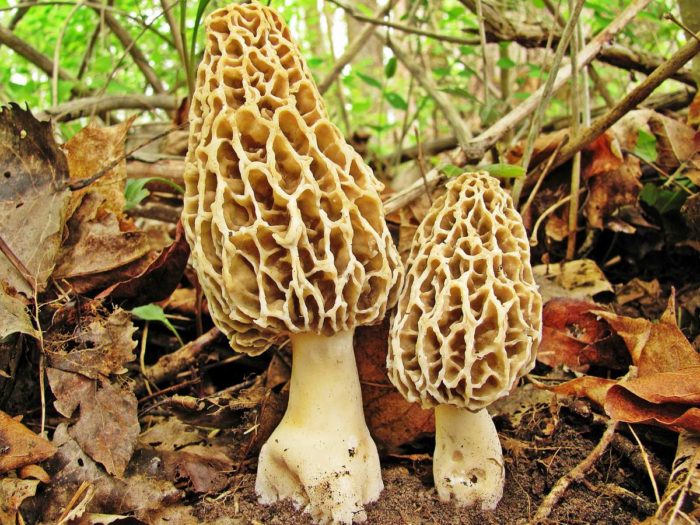
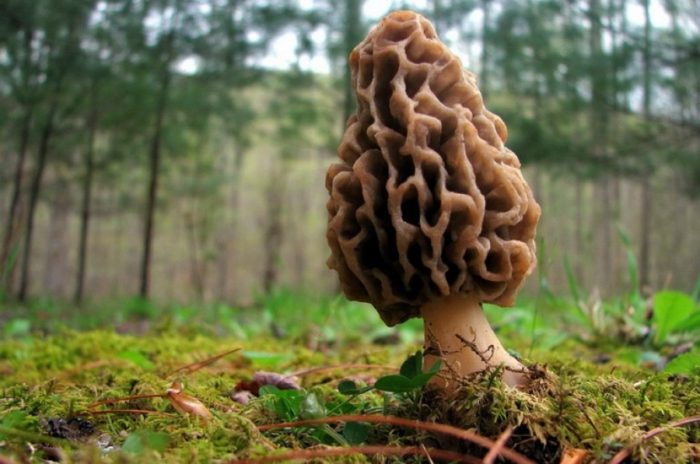
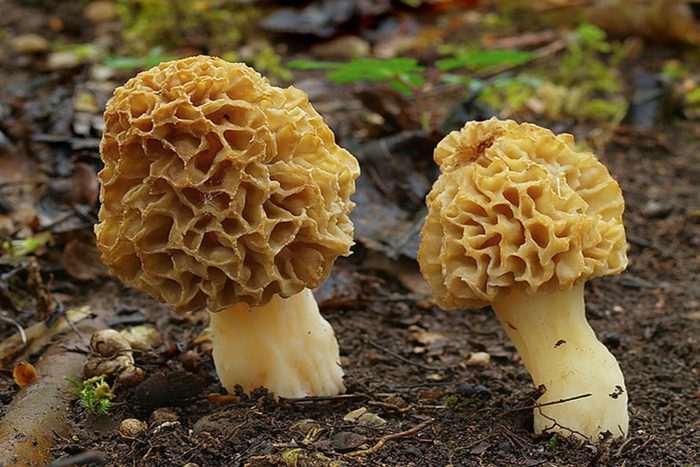
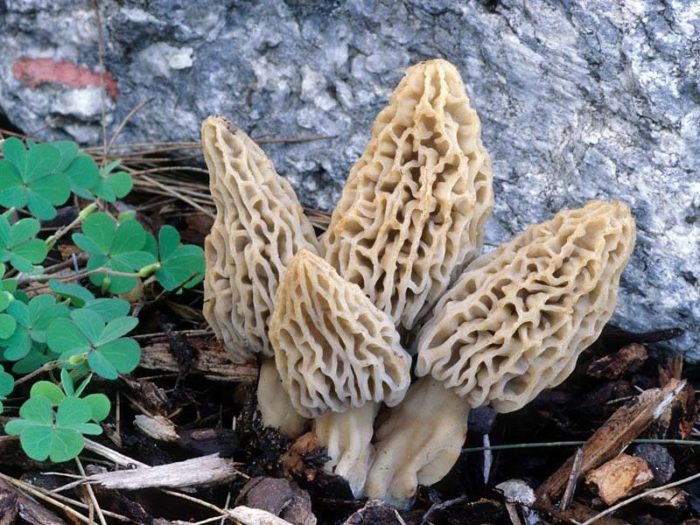
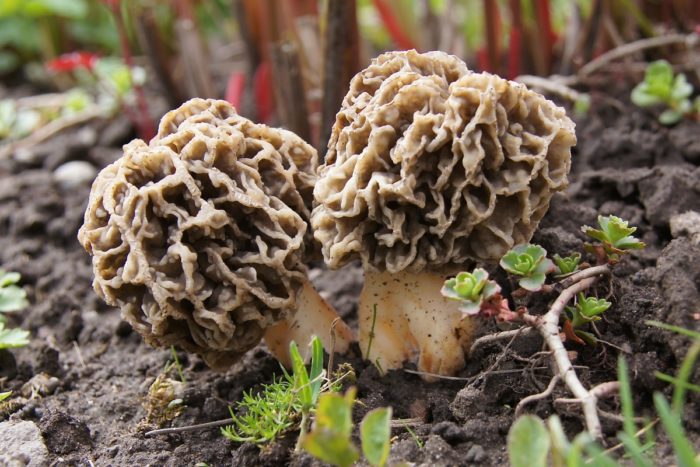
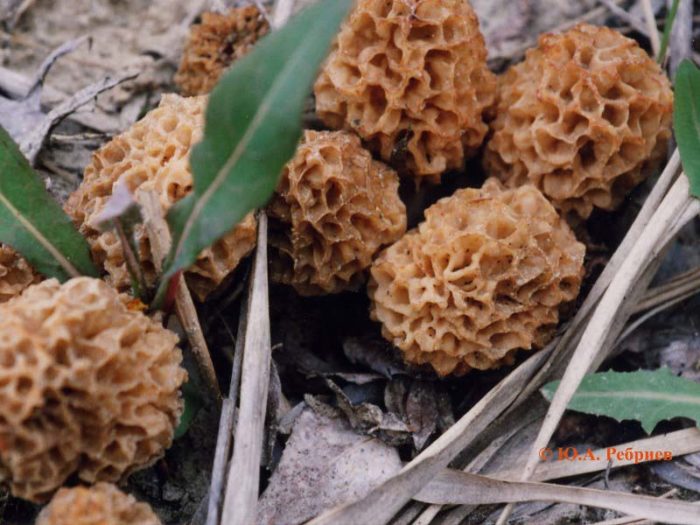
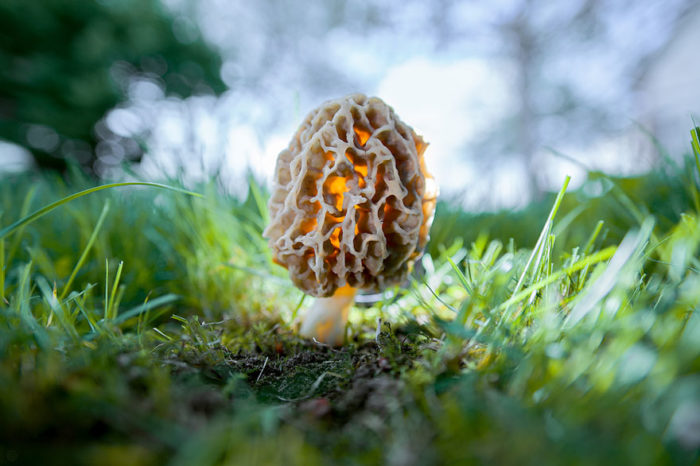



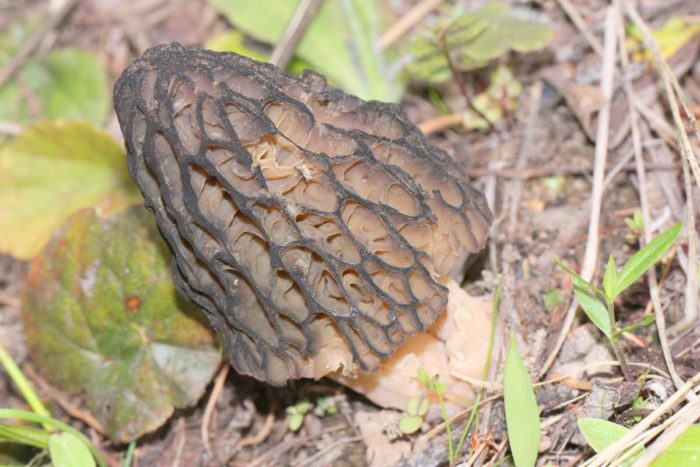
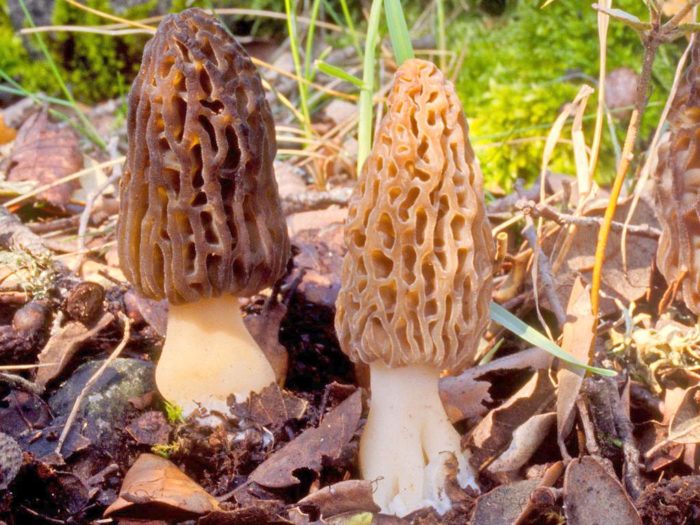
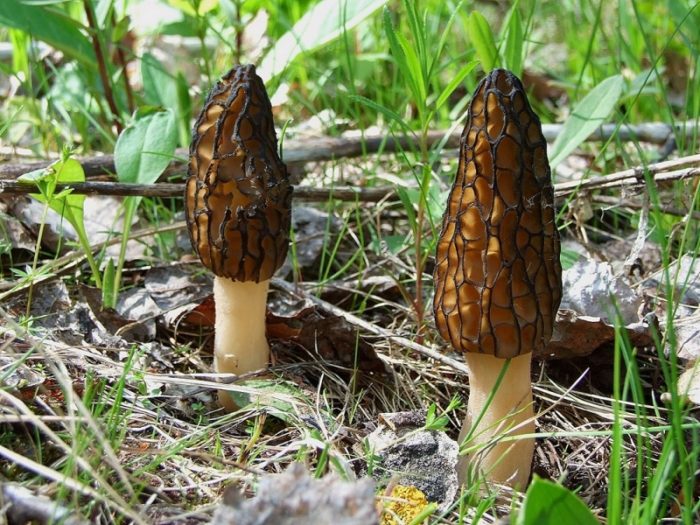
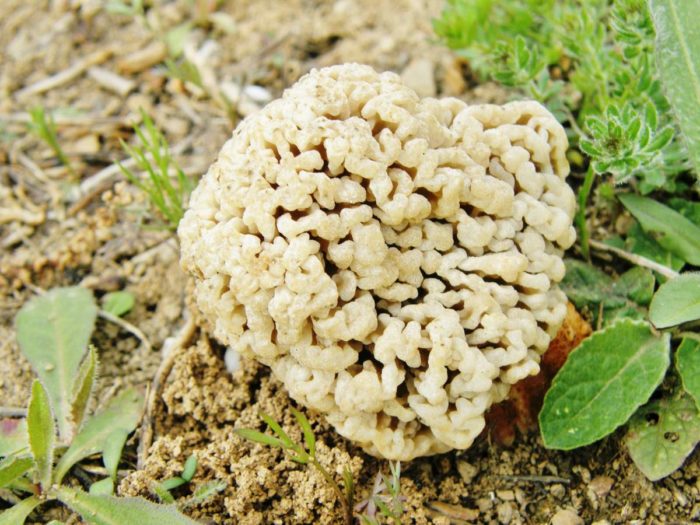
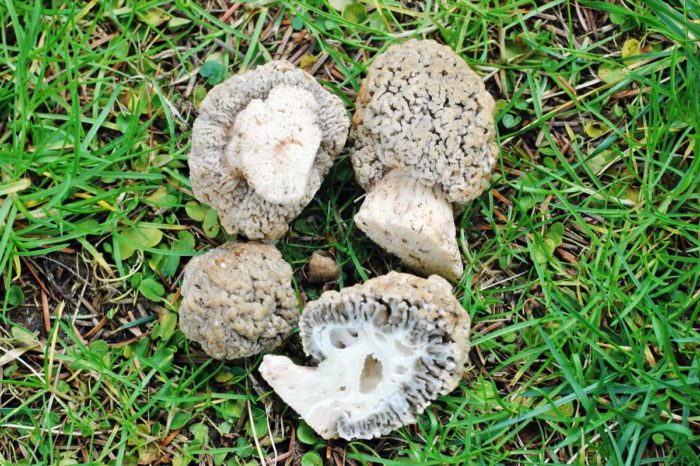
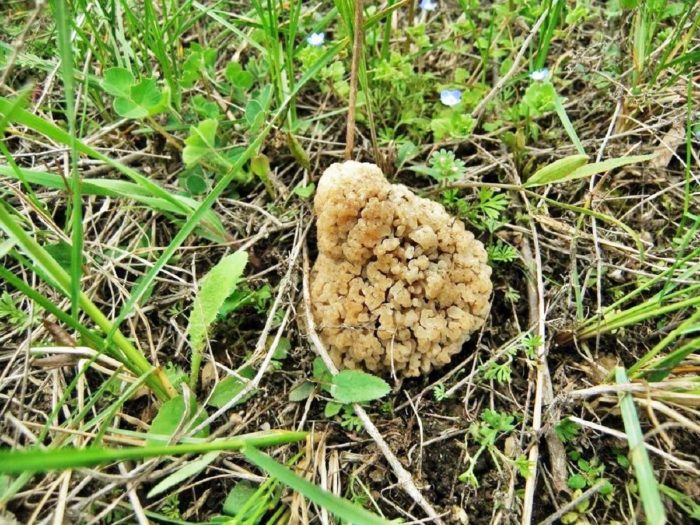
 Care and use of Kombucha at home (+22 photo)
Care and use of Kombucha at home (+22 photo) Edibility of the fungus of the motley umbrella and its description (+19 photo)
Edibility of the fungus of the motley umbrella and its description (+19 photo) Description of edible and inedible oils, their poisonous counterparts (+40 photos)
Description of edible and inedible oils, their poisonous counterparts (+40 photos) Useful properties of milk mushroom and its contraindications (+17 photos)
Useful properties of milk mushroom and its contraindications (+17 photos)
Vladimir
Excuse me, but the film shows not morels, but morels. I collected such buckets.And morel - you still have to find it! By the way, after the past hot summer with the following autumn mushroom tree, I am 100% guaranteed an unusually high spring crop of morels, stitches and morels. This does not happen every year (sometimes there are none at all), so I recommend going to the forest in the spring; even if you’ve never collected it, you will definitely find it next year! When to go It says about April ... hehe ... I live in St. Petersburg, we just simply do not have time to melt snow. When it was extremely early spring (in 1983, if I don’t confuse), I managed to collect the lines on April 13th. And you can even collect them in the snow, they grow on the inverted roots of fallen trees in conflagrations. But this is how lucky. To collect buckets, you need to drive near St. Petersburg on May 13 or a little later, the season is very limited. When the bird cherry blossoms, it is almost the deadline: now you can collect buckets, but literally the day after tomorrow it can be too late.
In general, try to get into this activity: picking morels (as the most common spring mushroom) and related species. Only, you bastard, it is very addictive!